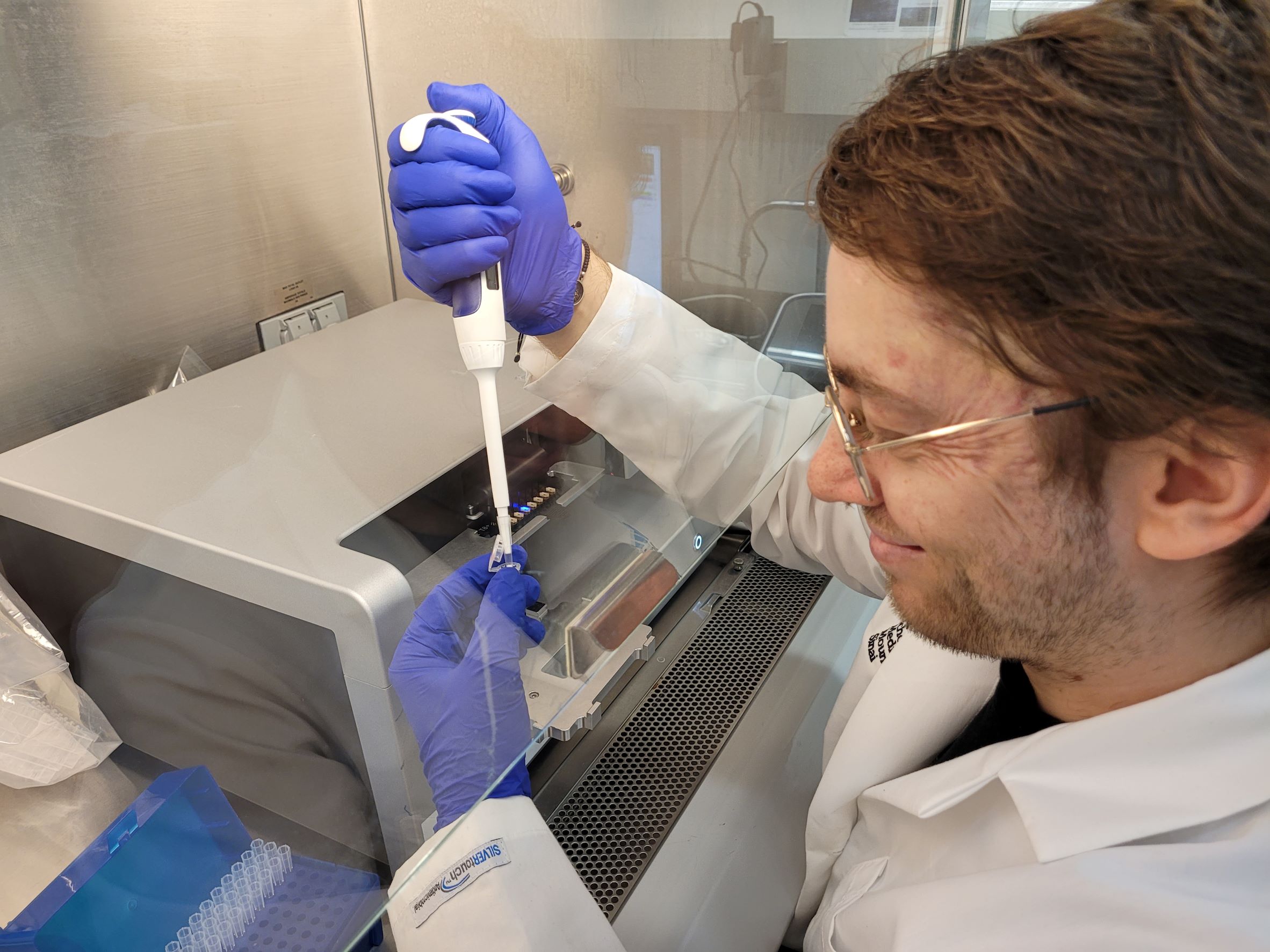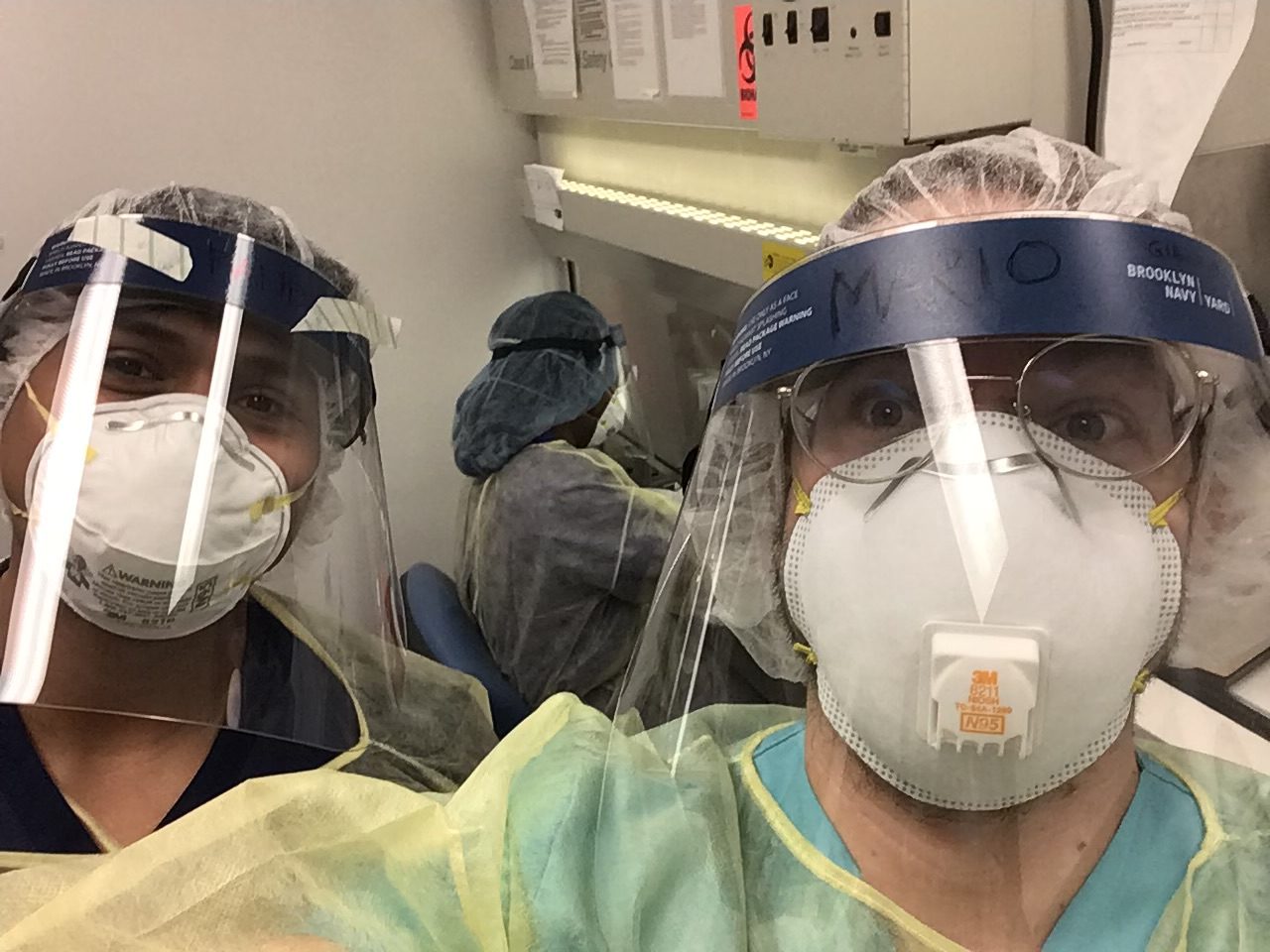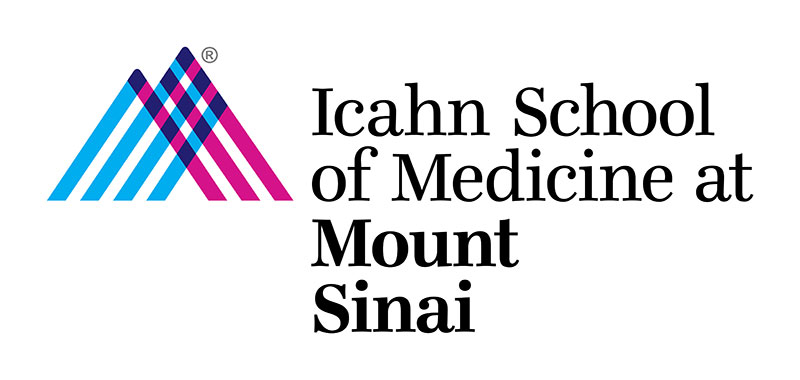Research Initiatives
Check out below the current research topics that we are exploring.

Viral-Host Interactions
During a viral infection, viruses can hijack the host machinery to enhance their replication and counteract host defenses. By identifying the host factors that the virus utilizes we can develop or repurpose drugs to negate the virus-host interaction, allowing for the cell to better defend and impede viral replication. In our analysis of SARS-CoV-2 virus-host interactions we in cooperation with the Nevan Krogan Lab, have identified 332 host factors important for its infection. With these findings we were able to identify host-targeted plitidepsin, already clinically-approved treatment for multiple myeloma, as a SARS-CoV-2 therapeutic. The White lab continues to explore host-virus interactions in SARS-CoV-2 and Influenza virus to better develop and identify new therapeutic treatments.

Cell Culture & In-Vivo Models
The White lab has a dedicated Tecan D300e and Biomek i7 to automate our cell culture systems and screen antiviral drugs in high throughput formats. Cell culture models are critical in the development of antiviral therapeutics. Screening of antiviral drugs in standard cell lines that can be infected by the target virus is a ubiquitous early stage of drug development. We also use these cell lines for initial screening, but these cell lines are plagued with genomic abnormalities that reduce their relevance to the human host. Therefore, we employ primary (HAE on ALI) and primary-like (iPSC) models for advanced analysis of antiviral leads to quantify the efficacy of the compound accurately. We have also established animal models of viral infection for the analysis of antiviral drugs for coronaviruses, flaviviruses and enteroviruses. Therefore, the White lab encompasses all the critical preclinical analysis required to determine antiviral efficacy of therapeutic candidates.

Drug Combination Studies
Antiviral drug combination therapies have been remarkably effective in the clinic against HIV (Human Immunodeficiency Virus) and HCV (hepatitis C virus). These chronic viral infections necessitate the use of drug combinations to prevent the inevitable emergence of resistance from monotherapy antiviral strategies. Acute viral infections, like those established by many respiratory viruses, also are at high risk of the development of antiviral resistance. This is due to the high mutation rate of RNA viruses, which leads to the constant development of viral variants. Furthermore, the use of a single drug in the treatment of an infection could necessitate the use of a high dosage resulting in increased toxicity. The use of two drugs targeting different viral proteins allows for each drug in the combination to inhibit the replication of viruses resistant to the partner drug. The White lab continues to explore the mechanisms behind synergistic drug interactions and assess potential clinical candidates that can take advantage of this antiviral synergy to improve potency and prevent the development of resistance in the clinic for Coronavirus, Flavivirus and Enterovirus.

Antiviral Resistance Analysis
Antiviral resistance is a prominent concept in the development of antiviral drugs. This is because the mutational rate of viruses is orders of magnitude larger than other pathogens such as bacteria and parasites. Therefore, the potential for an antiviral drug to generate resistance mutations in a viral population is a critical step in the development of novel therapeutics. The White lab uses automated NGS library preparation and analysis to track antiviral resistance mutations under compound selective pressure in our cell culture and animal models.
